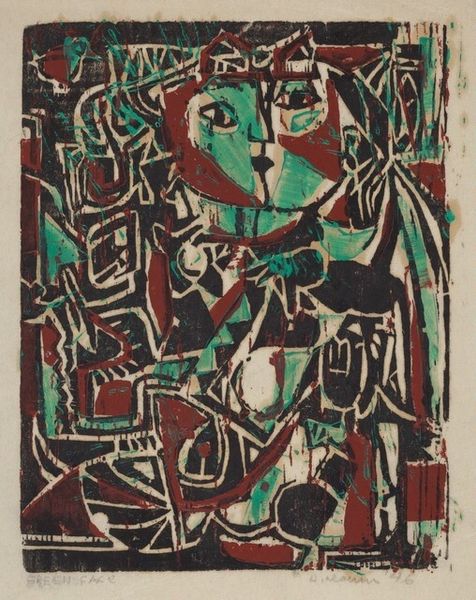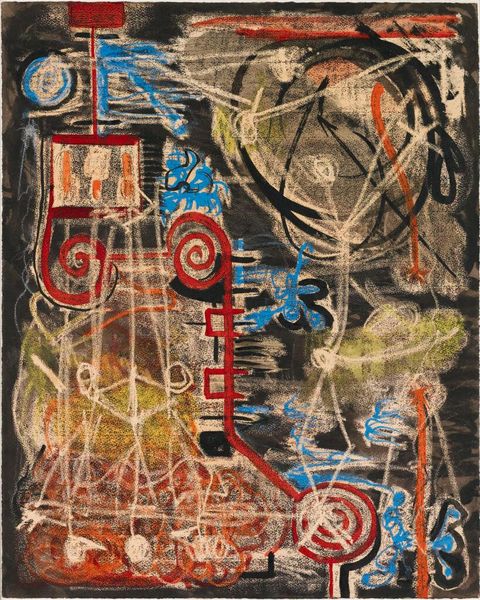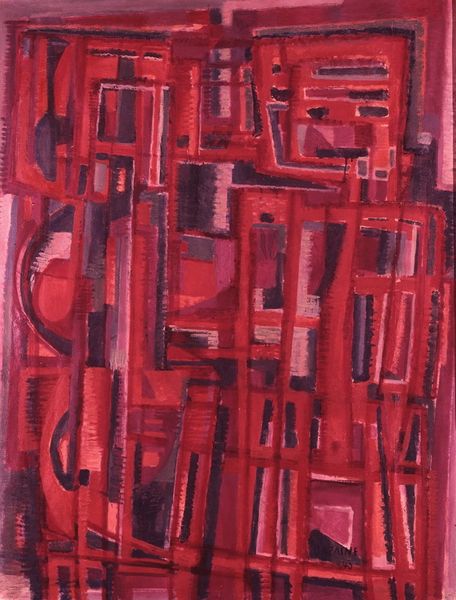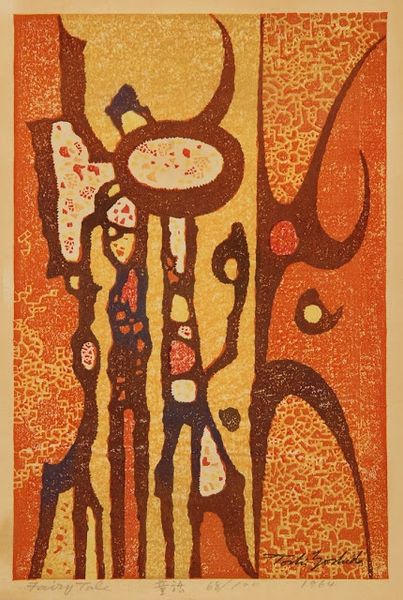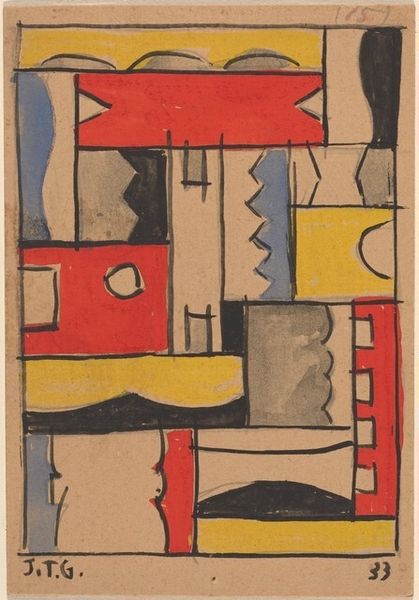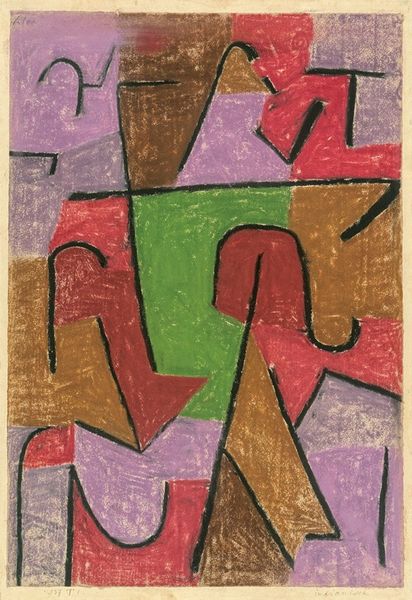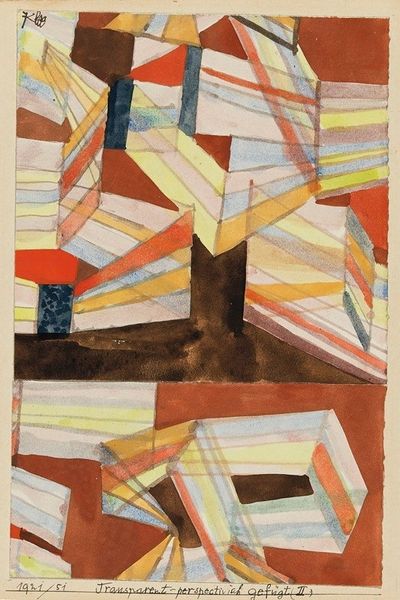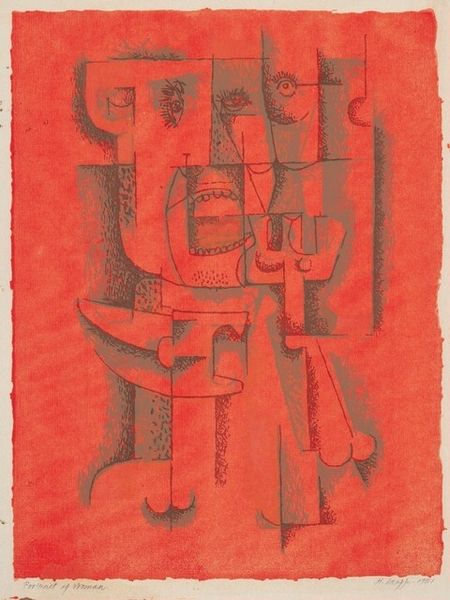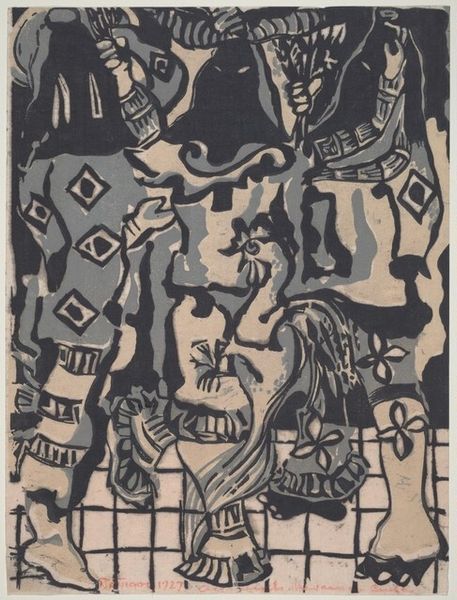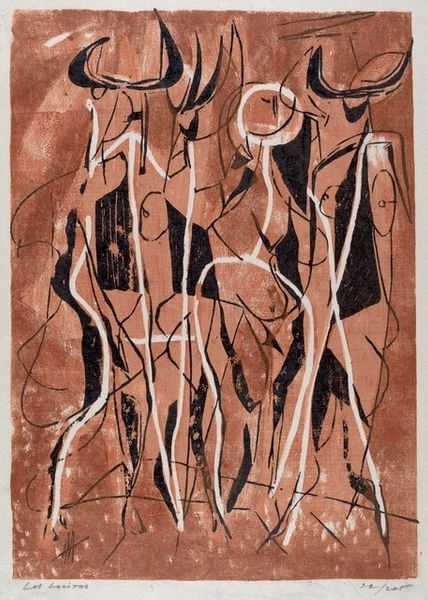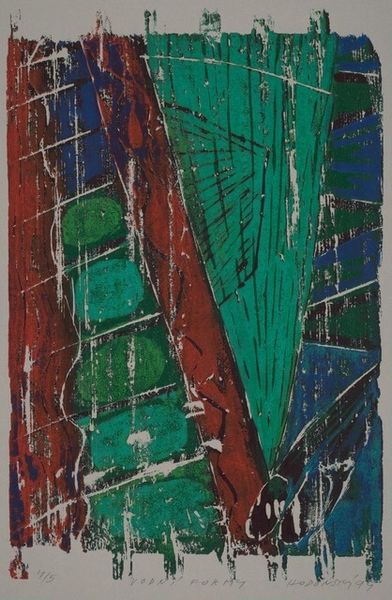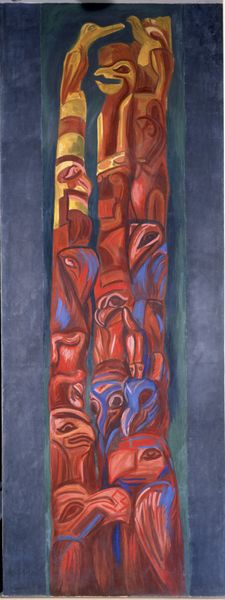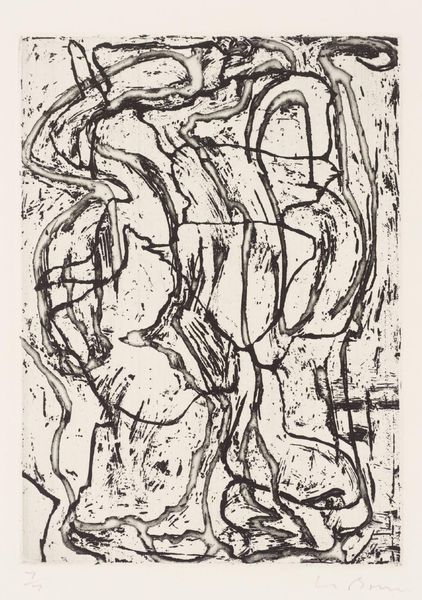
# print
#
abstract pattern
#
linocut print
#
geometric
#
abstraction
#
modernism
Dimensions: block: 426 x 298 mm sheet: 561 x 406 mm
Copyright: National Gallery of Art: CC0 1.0
Curator: The abstract geometric forms in this print strike me as imposing, like colossal architecture somehow compressed onto this small plane. It reminds me of monumental buildings from ancient civilizations, or a hieroglyphic city, now faded by time and light. Editor: Today, we're examining "Canyon Walls - Noon," a 1953 print by Hildegarde Haas. As you observed, the color palette and composition invite interpretations from ancient structures to abstract urban plans. Curator: Yes, it is precisely that dualism that pulls me in. The angular shapes seem so solid, so materially present. It's hard to believe it's a print on paper! The warm tones contrasted against the gray evoke a palpable sense of sun beating down on ancient stones. Perhaps there is more to it. Editor: The texture definitely contributes. As a linocut print, each carved line carries meaning, with the stark, unmodulated fields serving a symbolic function and reflecting an aspect of 20th-century aesthetic thought. Looking closely at this piece, do you observe other symbolist dimensions? Curator: I see elements that hint at figurative forms—totemic figures—that become part of that canyon landscape. I sense the presence of a symbolic guardian. If you look at that large structure near the right edge, it even appears to be wearing horns, reminding me of ancient mythological figures tied to landscapes. Editor: A valid interpretation. Haas worked during a period of significant artistic dialogue centered on modernist principles of non-representation. Abstraction offered a universal visual language that also provided ways for artists, regardless of background or national context, to express subjective emotional experiences and engage social ideas. We are presented here with an exploration into personal mythmaking through pure form. Curator: And, I suppose, those experiences get transferred from artist, artwork, viewer, to institution... It creates the interesting position art occupies today in socio-political contexts. Well, on that note, it has been a pleasure analyzing this intriguing print with you. Thank you for joining me. Editor: Indeed. Considering the era it emerged from, it presents us with new interpretations regarding cultural identity. Thank you for sharing these invaluable insights with our listeners.
Comments
No comments
Be the first to comment and join the conversation on the ultimate creative platform.
